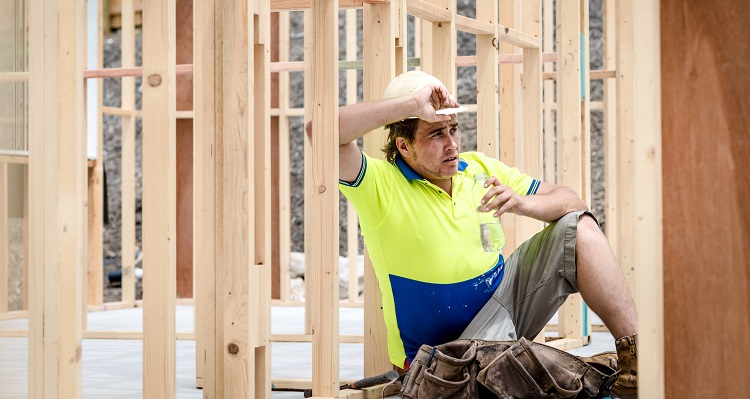6 Construction Safety Tips to Prevent Heat Illness

Working in the heat presents serious risks for construction workers, especially during the summer months. The physical nature of the work, combined with exposure to direct sunlight and limited access to climate-controlled environments, can quickly lead to heat stress or dehydration.
According to the Occupational Safety and Health Administration (OSHA), thousands of workers become ill from occupational heat exposure each year, and dozens die. In fact, heat illness is responsible for over 70% of heat-related deaths in the workplace, and construction accounts for the highest number of these fatalities.
Fortunately, these incidents are preventable with proper planning and education.
Here are six construction heat safety strategies to help protect workers during hot weather:
1. Improve Ventilation with Fans or Temporary Cooling Units
On indoor or enclosed construction sites, heat can build up quickly. Use industrial fans to improve airflow and reduce indoor temperatures. For particularly hot environments, consider renting portable air conditioning units to provide relief in break areas or enclosed workspaces.
2. Provide Access to Water and Encourage Frequent Hydration
Hydration is the first line of defense against heat stress. OSHA recommends workers drink one cup (8 oz) of water every 15–20 minutes. Employers should install accessible hydration stations and encourage scheduled water breaks. Avoid drinks high in caffeine or sugar, as they can worsen dehydration.
3. Schedule Heavy Work During Cooler Hours
To limit exposure during the hottest times of the day, plan the most physically demanding tasks for early morning or evening hours. The mid to late afternoon is typically the hottest period, and adjusting schedules can significantly lower the risk of heat-related illness.
4. Use Personal Cooling Equipment
Equip workers with cooling gear such as neck wraps, cooling towels, or moisture-wicking clothing. Cooling bands that fit under hard hats or on the neck can help regulate body temperature and reduce the risk of heat stroke.
5. Provide Air-Conditioned Break Areas
Taking breaks in a cool environment allows the body to recover and lowers core temperature. Encourage workers to spend lunchtime or short breaks in air-conditioned trailers, vehicles, or nearby restaurants when available.
6. Train Workers to Recognize Signs of Heat Illness
Education is critical in preventing heat stress. Provide training on the early symptoms of heat-related illnesses, including dizziness, headache, nausea, rapid pulse, and confusion. The Centers for Disease Control and Prevention (CDC) also recommends using a buddy system to help identify warning signs early—especially for new or returning workers who are not yet acclimated to the heat.
Conclusion: Make Heat Illness Prevention a Priority
With the right preparation, heat-related illnesses on construction sites are preventable. By following these six tips and aligning with OSHA’s heat illness prevention guidelines, employers can create safer, healthier work environments all summer long.
An insurance company that cares about you and insuring the things you wish to be insured.
Get a Quote> Find an Agent>

